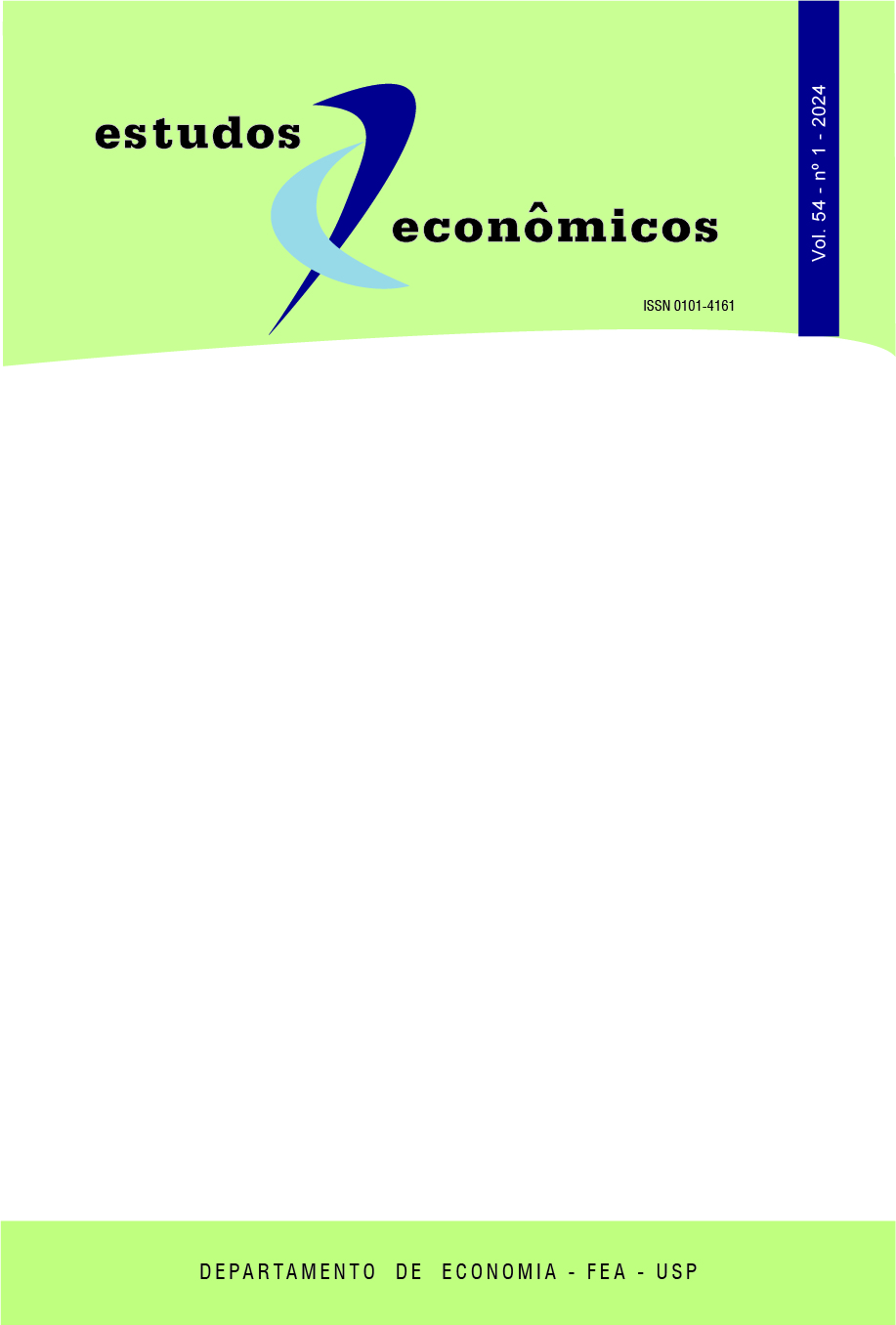Vanishing Market Power
DOI:
https://doi.org/10.1590/1980-53575415rrgKeywords:
Price formation, Imperfect competition, Frictions of trading, Perfect competitionAbstract
Perfect competition can be approximated in an environment with differentiated goods, heterogeneous firms, and frictions of trading. This paper considers an environment where sellers sell differentiated goods to buyers, and frictions of trading are represented by the buyers having incomplete consideration sets of the sellers in the market. Besides selling differentiated products, some sellers are more “prominent” and so are present in a larger number of buyers’ consideration sets. However, despite these imperfections, as the average number of sellers in the buyers’ consideration sets expands, the sellers’ market power vanishes and the equilibrium of the market approximates competitive conditions.
Downloads
References
Allen, Jason, Robert Clark, and Jean-François Houde. 2019. “Search Frictions and Market Power in Negotiated-Price Markets.” Journal of Political Economy 127(4): 1550–1598.
Armstrong, Mark, and John Vickers. 2022. “Patterns of Competitive Interaction.” Econometrica 90:153–191.
Armstrong, Mark, John Vickers, and Jidong Zhou. 2009. “Prominence and consumer search.” RAND Journal of Economics 40 (2): 209–233.
Burdett, Kenneth, and Kenneth L. Judd. 1983. “Equilibrium Price Dispersion.” Econometrica 51 (4): 955–969.
Butters, Gerard R. 1977. “Equilibrium Distributions of Sales and Advertising Prices.” Review of Economic Studies 44 (3): 465–491.
Dinlersoz, Emin M., and Mehmet Yorukoglu. 2012. “Information and Industry Dynamics.” American Economic Review 102 (2): 884–913.
Hart, Oliver D. 1979. “Monopolistic Competition in a Large Economy with Differentiated Commodities.” Review of Economic Studies 46 (1): 1–29.
Hotelling, Harold. 1929. “Stability in Competition.” The Economic Journal 39 (153):41–57.
Ivanov, Maxim. 2013. “Information Revelation in Competitive Markets.” Economic Theory 52 (1): 337–365.
Klemperer, Paul. 1987. “Markets with Consumer Switching Costs.” Quarterly Journal of Economics 102 (2): 375–394.
Lauermann, Stephan. 2013. “Dynamic Matching and Bargaining Games: A General Approach.” American Economic Review 103 (2): 663–689.
Moraga-Gonzáles, José L., Zsolt Sándor, and Matthijs R. Wildenbeest. 2017. “Prices and heterogeneous search costs.” RAND Journal of Economics 48 (1): 125–146.
Ostroy, Joseph M., and William R. Zame. 1994. “Nonatomic Economies and the Boundaries of Perfect Competition.” Econometrica 62.
Perloff, Jeffrey M., and Steven C. Salop. 1985. “Equilibrium with Product Differentiation.” Review of Economic Studies 52 (1): 107–120.
Stahl, Dale O. 1989. “Oligopolistic Pricing with Sequential Consumer Search.” American Economic Review 79 (4): 700–712.
Varian, Hal R. 1980. “A Model of Sales.” American Economic Review 70 (4): 651–659.
Wolinsky, Asher. 1986. “True Monopolistic Competitition as a Result of Imperfect Information.” Quarterly Journal of Economics 101 (3): 493–512.
Published
Issue
Section
License
Copyright (c) 2024 Rafael Guthmann

This work is licensed under a Creative Commons Attribution-NonCommercial 4.0 International License.
By submitting an article, the author authorizes its publication and attests that it has not been submitted to any other journal. The original article is considered final. Articles selected for publication are proofread for grammatical and orthographic errors. The journal does not pay rights for published articles. The Institute of Economic Research from the School of Economics, Business and Accounting of the University of São Paulo (Instituto de Pesquisas Econômicas da Faculdade de Economia, Administração e Contabilidade da Universidade de São Paulo) owns the journal's copyright.




